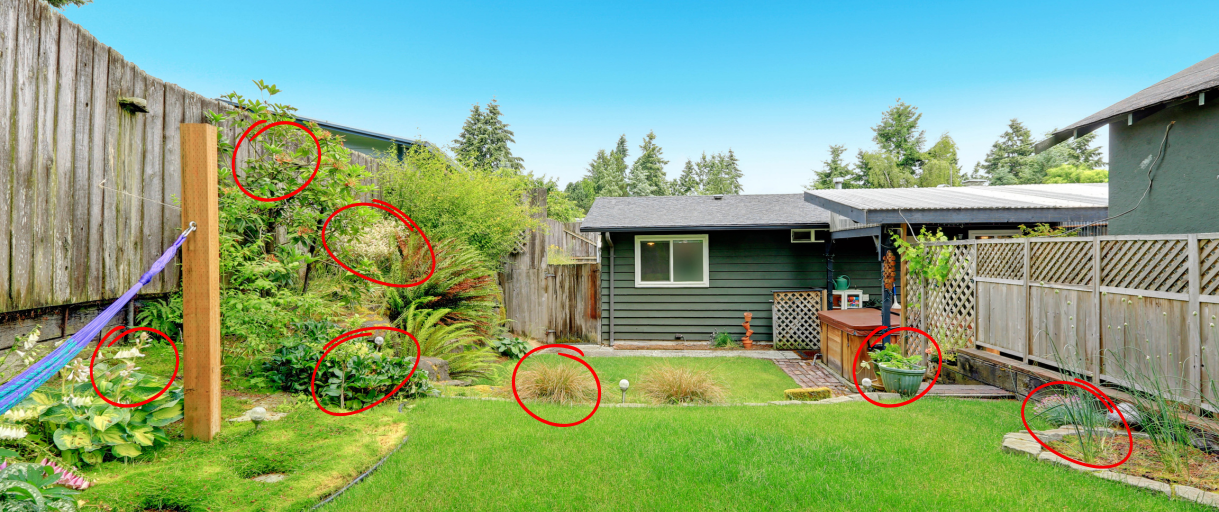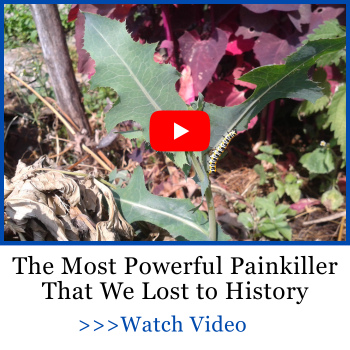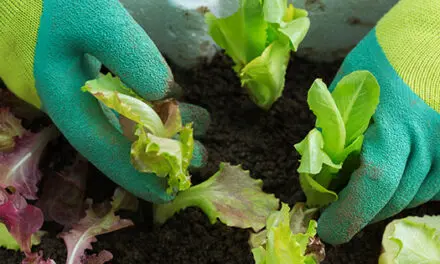For years, I cursed them. Every Saturday, knees sore, I yanked weeds from my lawn and tossed them into the compost. It felt like an endless war.
Then one frustrating morning, a neighbor leaned over the fence and asked,
“Why are you throwing away dinner?”
I froze.
“Dinner?” I echoed, confused.
“Yep! We eat those. If you’re tossing ’em, can we have them?”
Stunned (and slightly embarrassed), I did some digging—and lo and behold, she was right.
They weren’t just edible, they were actually nutritious.
So we tried them. Here are the six weeds my family started eating.
Dandelion (Taraxacum officinale)
The dandelion is the perfect plant to begin with because you already know what it looks like.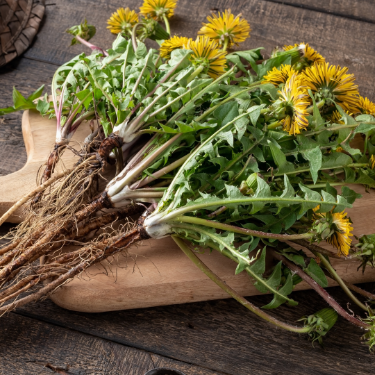
Plus it doesn’t have any dangerous lookalikes. To be certain you have a true dandelion, look for a few key things. The flower stem is a single, hollow tube with one yellow flower head at the top.
You will never find leaves growing on the stem. All the leaves grow in a circle, or rosette, flat at the base of the plant. Those leaves are the most telling feature.
They have a jagged, “toothed” edge, which is how the plant got its name, from the French dent-de-lion, or “tooth of the lion.”
You can basically eat every part of this plant. The leaves, flowers, and roots are all useful, and not just in the kitchen. You can also turn them into really powerful remedies, such as the Amish Ibuprofen.
If you struggle with aches, pains, or inflammation but hate the nasty side effects of over-the-counter painkillers, this natural salve could be a game-changer for you. It works deep to reduce swelling, ease stubborn joint pain, and calm sore muscles, all without risking stomach upset or long-term damage. I’ve used it myself after tough days on my feet, and it’s like having a drugstore-strength pain reliever right in a jar, only cleaner, safer, and 100% made of ingredients I know and trust. So if you want fast, effective relief without the harsh chemicals, this homemade remedy is a must-try.
And here are some other remedies you can make out of dandelions:
- Sore Muscle and Joint Salve: A deeply soothing balm that melts away tension and stiffness after a long day.
- Dandelion Tea: A gentle detox drink that supports your liver and boosts digestion, helping you feel lighter and more energized.
- Dandelion and Burdock Purge: A traditional herbal cleanse that flushes toxins and jumpstarts your body’s natural detox pathways.
Burdock (Arctium lappa)
Burdock is a plant that operates on a two-year cycle, and you need to know the difference to use it correctly.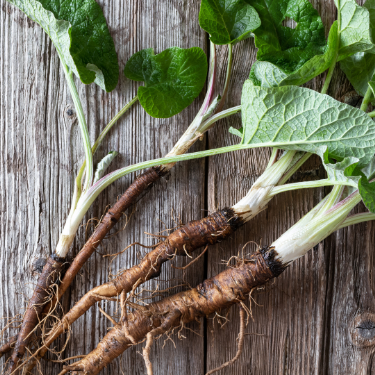
The prize you are after is the long, brown taproot, and you can only harvest it from a first-year plant. In its first year, burdock does not produce a flower stalk.
Instead, you should look for a low-growing rosette of very large, heart-shaped leaves with fuzzy, woolly undersides. The plant stays close to the ground, focusing all its energy on developing its root.
The tall, branching plant with purple, thistle-like flowers that later become the sticky burrs that cling to your clothing is a second-year plant. By that point, the root has become tough and woody, so you want to ignore it and find a first-year rosette.
Harvesting this root is a serious task. The taproot can grow two or three feet deep, so you need to dig carefully with a spade or shovel to get it out without breaking it. Once cleaned, this root is a fantastic vegetable with a deep, earthy, and slightly sweet flavor.
That sweetness comes from inulin, a type of dietary fiber. Beyond the root, you can also eat the peeled leaf stalks and the young flower stalk of the second-year plant before any flowers have opened.
➡️ How to Make The Tincture That Can Help Every Part of Your Body at Once
Common Plantain (Plantago major)
Find plantain low in your lawn – it hugs the ground like nature’s bandage. Identify it by oval leaves with 3-7 parallel ribs and seed spikes jutting from the center like tiny flagpoles.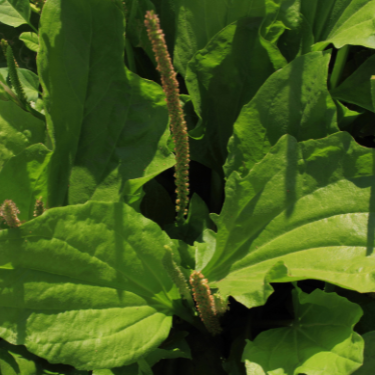
Eat young leaves (before seed spikes form) and seeds later. It’s calcium-rich for bones, packed with vitamin A for eyes, and contains mucilage that soothes your throat.
Use it simply: Bake young leaves tossed in oil at 400°F until crisp for chips.
💡Bonus: Mash fresh leaves into a poultice for bug bites – I keep a plantain patch near my back door for this. Medicinally, plantain is true a powerhouse. I usually crush fresh leaves and press them on cuts or itchy bites. It works fast to stop irritation. If my throat feels scratchy or my stomach’s upset, I steep dried leaves in hot water for a soothing tea that helps calm inflammation and supports digestion.
But if you’re like me and don’t always have time to gather and prepare herbs, I found this tincture from Nicole Apelian that honestly saved me when I needed relief but couldn’t make my own remedies on the spot. It combines the gut-soothing, anti-inflammatory benefits of plantain and other herbs in one easy tincture, and it’s extracted using the spagyric method, so you don’t miss out on any of the benefits.
Chickory (Cichorium intybus)
Often found growing along roadsides, chicory has bright blue flowers and jagged leaves. The roots can be roasted and ground as a coffee substitute.
Young leaves can be eaten raw in salads or cooked to reduce bitterness. Chicory is known for aiding digestion and contains inulin, a prebiotic fiber.
Red Clover (Trifolium pratense)
You are likely familiar with the small white clover that dots your lawn, but the one you should get to know for your kitchen is its taller cousin, Red Clover. It is easy to tell the two apart.
Red Clover stands much taller, sometimes over a foot high, on hairy stems. Its flower is not a tight white ball, but a larger, shaggier puff of pink or reddish-purple florets.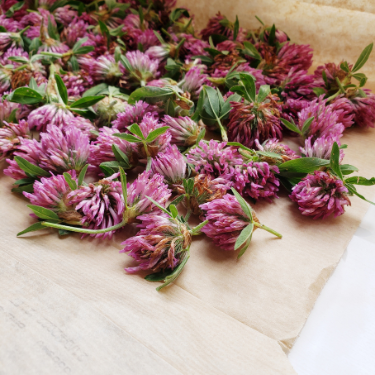
The leaves grow in the classic three-part clover shape, and you can usually spot a pale, v-shaped marking, or chevron, on each leaflet.
The most useful parts of the plant are the flower heads and the young leaves. I pick the flowers when they look fresh and vibrant, and you can use them right away by pulling the tiny florets from the head and tossing them in a salad for a pop of color and a slightly sweet flavor.
Mostly, I gather them for tea. I dry the flower heads whole on a screen and store them in a jar for use during the winter.
The leaves are also edible, but I find they have a strong flavor, so I typically only mix a few of the youngest ones into a larger salad of wild greens.
Beyond the kitchen, Red Clover is also a powerhouse for natural remedies. You can ferment the blossoms to create this tonic that can help rebuild bone mass, supporting stronger, healthier bones over time. It’s also widely used as a gentle lymphatic cleanser, helping your body flush out toxins and boost immunity. You can also turn it into a hormone harmony elixir, which can ease symptoms related to hormonal imbalances and support overall wellness.
You can find all of these remedies, along 250+ more, right here.
Milkweed (Asclepias syriaca)
This next one, Common Milkweed, is a fantastic edible, but it comes with a strict, non-negotiable rule: you must cook it properly before eating.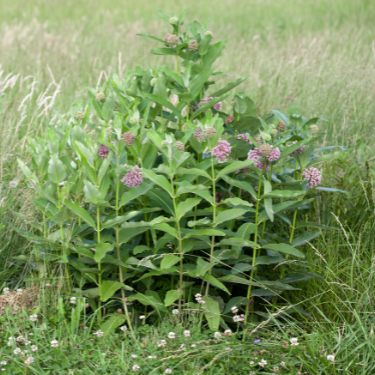
The raw plant contains cardiac glycosides, which are toxic compounds. The good news is that these are broken down by heat.
To safely identify milkweed, look for a tall, single stalk with large, oblong, blue-green leaves that grow in opposite pairs. The most obvious sign is the thick, milky white sap that bleeds out if you break a leaf or stem.
In the summer, it produces large, globe-shaped clusters of pinkish-purple flowers that have a very distinct, sweet scent.
You can eat several different parts of the plant as they appear throughout the seasons. In early spring, when the new shoots are under eight inches tall, they are a wonderful vegetable, often compared to asparagus.
Later, I harvest the unopened flower buds while they are still green and tight, and then the small, firm seed pods when they are no more than two inches long. A pod is too old if the seeds inside have turned brown or the fluff is developed.
No matter which part you harvest—the shoots, the buds, or the pods—the cooking method is key. You must boil them to make them safe and palatable.
Chickweed (Stellaria media)
Chickweed is a soft, low-growing plant with small, star-shaped white flowers and bright green oval leaves. It forms a dense mat in shady, moist spots like garden beds or lawns.
It has a mild, slightly grassy flavor and can be eaten raw in salads or cooked like spinach. Chickweed is packed with vitamins A, C, and minerals like iron and calcium. It’s also traditionally used as a soothing poultice for skin irritations.
Purslane (Portulaca oleracea)
When the weather gets hot and dry, you will likely see Purslane showing up in your garden paths and any disturbed, sunny soil. It is a succulent, and it grows low to the ground, spreading out in a thick mat.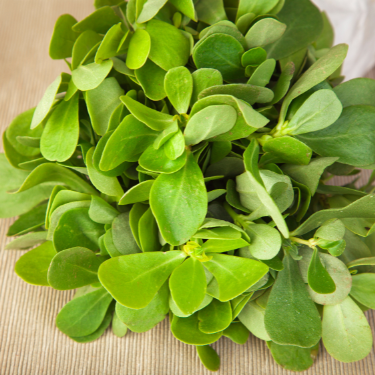
You can identify it by its smooth, plump, reddish stems and its fleshy, paddle-shaped green leaves that look like tiny jade plant leaves. The entire plant has a crisp, succulent feel.
You need to be aware of a toxic lookalike called Spurge, which often grows in the same conditions. The key difference is that Spurge has a wiry, hairy stem and will bleed a milky white sap when broken. Purslane has a smooth stem and a clear sap.
The wonderful thing about Purslane is that you can eat the entire plant above the ground—stems, leaves, and the tiny black seeds. It has a fantastic crisp texture with a refreshing, slightly sour and salty taste, almost like a lemon and cucumber combined. I use it all summer long as a salad green.
What makes this plant so remarkable is its nutritional profile. It is one of the richest plant sources of Omega-3 fatty acids, which you typically associate with fish. It is also packed with vitamin E and antioxidants like beta-carotene.
You can eat Purslane raw or cooked, which makes it very versatile. My most common use is to simply pinch off bunches and toss them straight into salads for their unique crunch. They also hold up well in a stir-fry or can be added to a smoothie for extra nutrients.
Weed Lookalikes to Watch Out For
Poison hemlock fools many – it looks like wild carrot but has purple-blotched stems and smells like stale urine. Foxglove mimics comfrey with fuzzy leaves and bell-shaped flowers that scream danger.
Dogbane resembles milkweed but snaps clean instead of oozing milky sap. When in doubt, walk away. Find out how to recognize plants and their poisonous look-alikes right here.
Start with unmistakable weeds: dandelions with their jagged leaves and yellow flowers, plantain with its parallel-ribbed oval leaves, or purslane hugging the ground with succulent red stems.
Stop Throwing Away Your Weeds, Do This Instead!
The 10 Wild Foods That Saved Me When I Was Homeless (Video)
Weed Tea – Turning Unwanted Plants Into Fertilizer
How To Make Survival Dandelion Jelly with 2 Years Shelf Life

